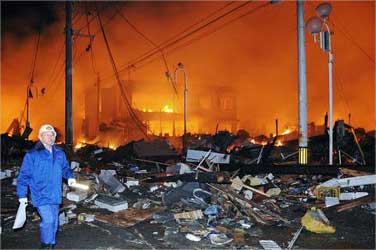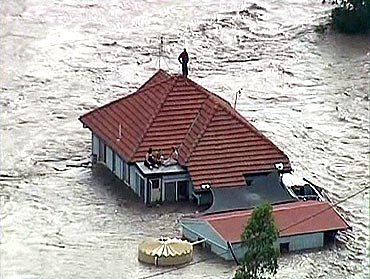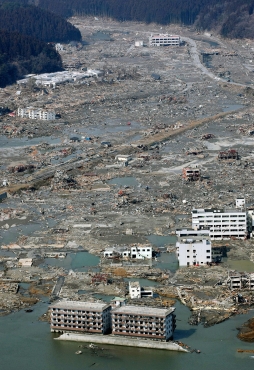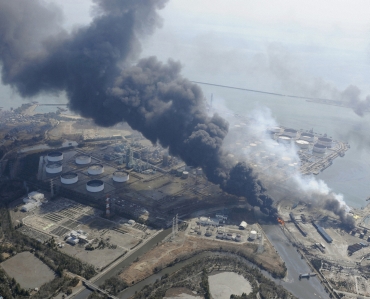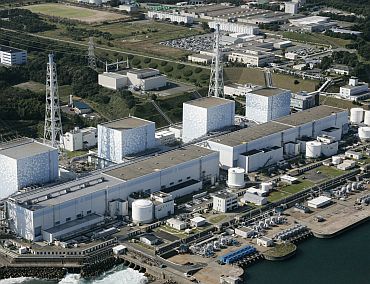 | « Back to article | Print this article |
80% land in India prone to catastrophes
This year has already seen three major global catastrophes - in Australia, New Zealand and Japan.
Yogesh Lohiya, Chairman and Managing Director, General Insurance Corporation, the only domestic resinsurer in the country, in an interview with Business Standard, says both the government and the regulator must form a pool, since over 80 per cent of land in India is prone to catastrophes.
Edited excerpts:
How would the recent catastrophes in Australia, New Zealand and Japan effect reinsurance pricing in the domestic market?
In India, pricing for catastrophe risks are low, since the country has been catastrophe-free in the last five years.
Click NEXT to read more...
80% land in India prone to catastrophes
Domestic prices have risen 5-10 per cent during the renewals. Globally, renewals happen only in January. So, the impact of the recent events will be known only when these treaties are up renewal in January 2012.
What is the extent of the insured loss in the Japan crisis?
It is very difficult to access the extent of the damage. According to figures provided by the Japanese government, the total economic loss is estimated to be $409 billion.
Click NEXT to read more...
80% land in India prone to catastrophes
In Japan, one has to assess the reasons for the damage, as there were three simultaneous events - the earthquake, the tsunami and fires.
In the case of residential properties in Japan, 80 per cent of the damage is borne by the government and only 20 per cent by the insurers. However, for commercial properties, the whole loss is borne by insurance companies. So, there are a lot of technicalities involved while assessing the claim.
But one thing is certain - the direct insurance companies (not reinsurers) are definitely affected.
Click NEXT to read more...
80% land in India prone to catastrophes
Though we already have a terrorism pool in India, don't you think a catastrophe pool is also required?
Looking back, one must say that creating the terror pool was an effective act by the regulator.
Today, even after meeting the claims of the Mumbai terror attack, the size of the pool swelled to Rs. 1,700 crore (Rs. 170 billion).
So, it is good for the country to have such a pool. Currently, there aren't any suggestions for a catastrophe pool, though there is a definite need.
Click NEXT to read more...
80% land in India prone to catastrophes
What is the status of the nuclear pool?
We have domestic capacities which are worth roughly about Rs. 400 crore (Rs. 4 billion). The liability per plant is estimated at Rs. 1,500 crore (Rs. 150 billion).
There are 26 such pools around the world and we would have to take support from those. The pool would cover only civil liabilities.
We have worked out some modalities but the main issue is the inspection of power plants by foreign agencies.
For the formation of any such pool, inspection is necessary.
Click NEXT to read more...
80% land in India prone to catastrophes
They would seek data on different parameters like safety, security and other risks.
We are in constant talks with the government and the Nuclear Power Corporation and hope to get a breakthrough soon.
How did your business fare in 2010-11? What was the share of overseas business during the period?
In 2009-10, our total premium income stood at around Rs. 9,000 crore (Rs. 90 billion) and we expect a 20 per cent growth in 2010-11.
So, the total premium income should cross Rs. 11,000 crore (Rs. 110 billion).
Click NEXT to read more...
80% land in India prone to catastrophes
We have recently opened an office at Kuala Lumpur and are planning to open an office in Brazil and another in Africa - most probably in South Africa.
Despite a decent growth in premiums, the domestic general insurance industry is incurring huge underwriting losses.
The major concern for the domestic general insurance industry is the rise in underwriting losses.
Motor and health constitute 64 per cent of the total business and both recording losses. This is not the result of de-tariffing only.
I think the industry is not pricing the risks adequately. Hence, loss ratios are climbing every year. The industry must strive to improve underwriting practices.
